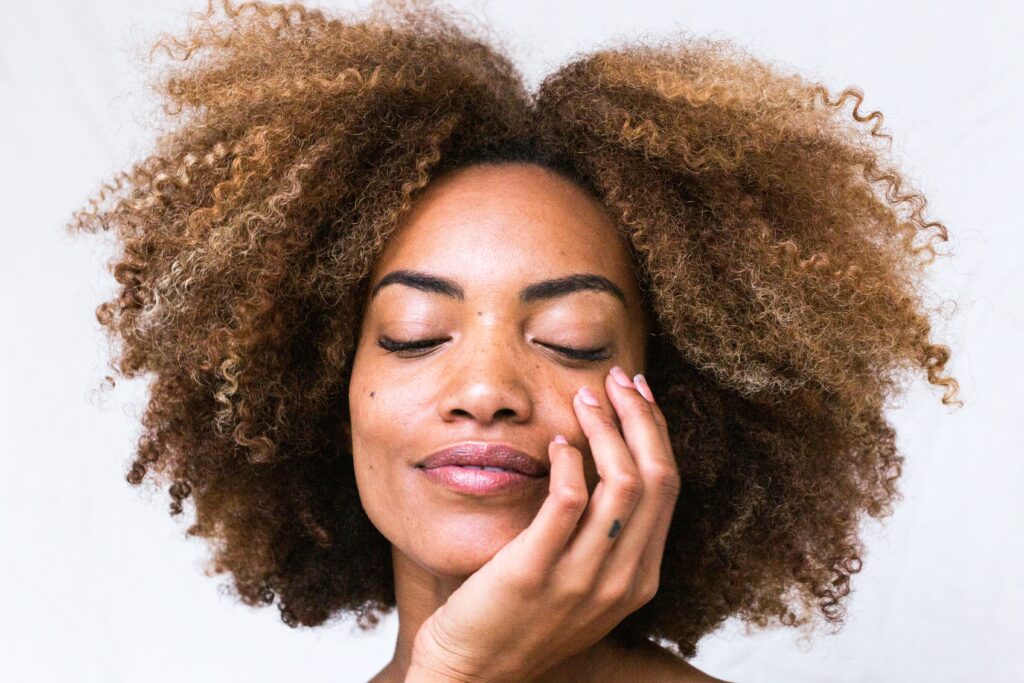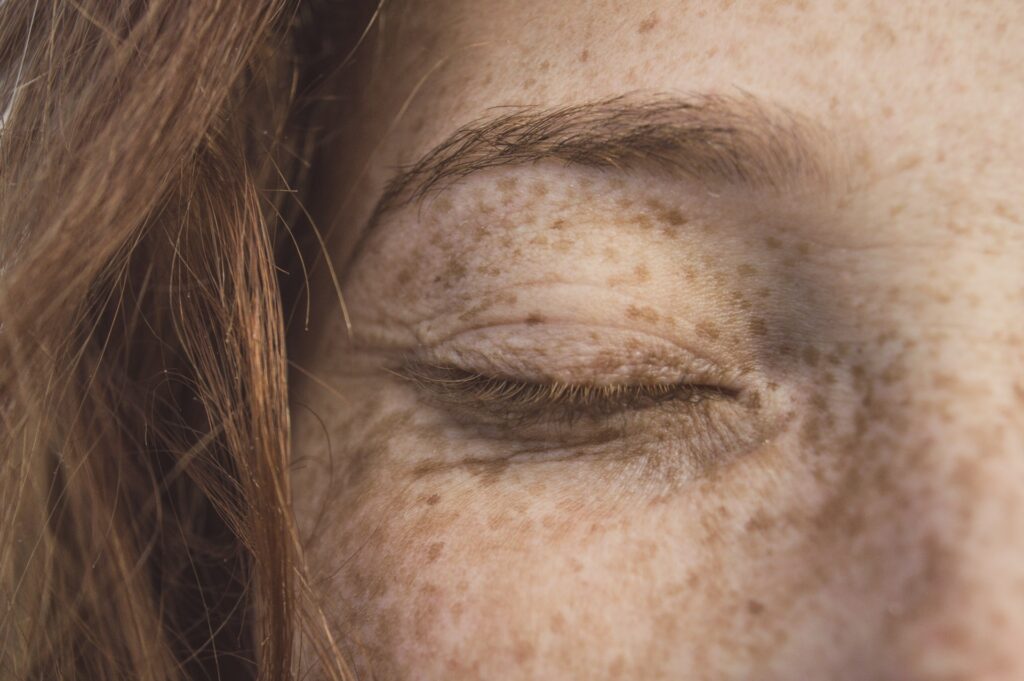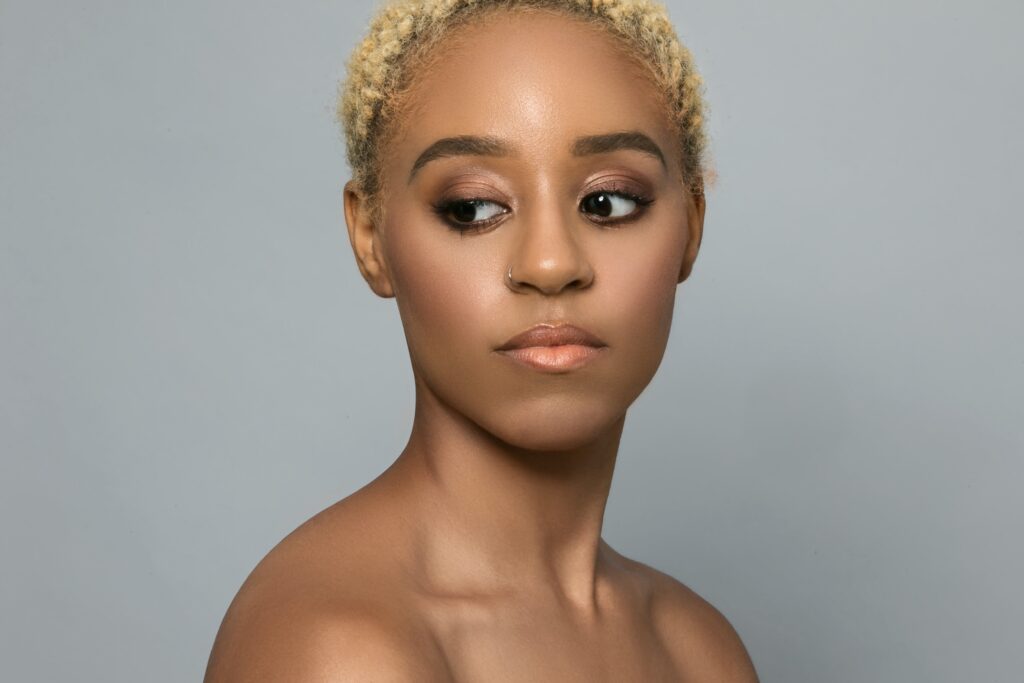
In this article, we’ll be talking about skincare. Whether you’ve been in the industry for some time, or if you’re brand new, by truly understanding skincare – the foundation of what Avon is about – it will help you to take your business to the next level. By prescribing the correct products to your customers you can increase your sales and help your clients get the results they want.
Skin – Back to Basics
By understanding the basic skin types and skin concerns (also aging – that word no one really likes) then you’ll know how to analyze the skin. I’ve got some lovely tools to show you how to analyze skin correctly. What’s more, we also have a number of brands within the Avon range and knowing which brand to prescribe is really important. Finally, knowing what is a good skincare routine and what your regimen should look like is essential.
The skin is the body’s largest organ and consists mainly of water and protein. It also contains blood vessels, sweat glands, sebaceous glands, lymphatic vessels, and hair follicles. The skin needs to be nourished with amino acids, vitamins, trace elements, and essential fatty acids. It also needs to be kept hydrated with moisture and oil to keep it soft smooth and supple.
The skin consists of three layers:
- The epidermis
- The dermis and,
- The subcutaneous tissue
The epidermis is the outermost layer of the skin and renews itself every 26 to 28 days. Cells at the deepest level of the epidermis divide and migrate, changing as they progress – ultimately degenerating to form the keratin on the outer part of the skin. Melanocytes, the pigment cells that give skin its colour, are also found in the epidermis.
The dermis is thicker than the epidermis and consists mainly of collagen and elastic fibers which give skin its strength and supplements. Damage to the dermis is what causes wrinkling and aging. The dermis also contains hair follicles, sweat and sebaceous glands. Sebaceous glands produce sebum or oil providing natural lubrication for the skin. There are no sebaceous glands in the soles or palms. Lastly, the hypodermis, also known as the subcutaneous layer, contains fat and connective tissue that houses larger blood vessels.
Skin also has a thin layer on the surface known as the acid mantle. The acid mantle is a very thin film on the surface of our skin that acts as a barricade to bacteria and other viral substances trying to penetrate the skin. The skin’s acid mantle is composed of sebum which is the natural oil produced by the sebaceous glands dead skin cells and sweat. The acidity of the acid mantle is what provides a protection barrier against chemical harm while preventing dehydration there are several factors that can disrupt the acid mantle and the natural ph of skin this can lead to dryness, redness, irritation and in some cases a more aged appearance. These factors include using the incorrect cleanses and soaps and other skin care products.
Whilst we may think the main function of the skin is our unique appearance, it does so much more. The main functions actually include providing protection against external harm, regulating temperature the excretion of sweat, urea and other substances, the secretion of sebum in order to keep the skin from drying out, to provide the sensation of touch and pressure, and lastly to form vitamin D.
Certain factors can affect the condition of the skin these can be internal external or hereditary. The internal factors that influence the skin include an improper diet that lacks in hydration and nutrition, fluctuations in weight, inadequate sleep, stress, hormones, pregnancy, certain types of medication, and smoking.
The external factors include various environmental factors such as pollution which may cause sensitivity or a high temperature which may cause oiliness. Other external factors include the use of air conditioning which dehydrates the skin, improper use of skin care products or using the wrong products for your skin. Lastly, the most important in the external factor category is ultraviolet or uv light which is a major contributing factor to skin ageing. Therefore it is always imperative to recommend products with SPF. Finally, hereditary factors also influence the skin and can cause a predisposition to skin conditions such as acne pigmentation and broken capillaries, whereas genetics is the reason behind your skin type.

TIP: If you need to get more training or info on skin types just log on to avon.co.za and click on the new tab and all the information about different skin types the layers of your skin will also be there so that you can use this information and really relay it to your customers so you can be classified as a true skin care expert.
Where can you find more information?
- avon on app
- on our website
- our learning hub
Skin types
Now, a skin type is something that you are born with. You cannot change it, you are born with it, it belongs to you. In contrast, a skin condition is something that is temporary. It’s either due to a change in lifestyle, stress, hormonal changes in your body, or a certain period that you could be going through within your your life stage.
Your customers will often need guidance on which range of products to use for their skin type. However, to start off with, they may need clarification on what skin type they have. Here is a simple guide on how to assist them. Customers with dry skin may benefit from the Anew Ultimate range, those with oily skin may see excellent results with the Nutraeffects range, while the Clearskin range may be a good choice for those with combination skin.

The different skin type:
There are five kind of generic skin types
- Dry
2. Combination skin
3. Oily skin
4. Normal and
5. Sensitive skin
The three main skin types (most common) that I’m going to go into today are:
Dry skin
So if you think about dry skin you’re going to have a petal like thin skin and something similar to this – you are going to be prone to dehydration. Now dehydration causes fine lines and wrinkles, so unfortunately if you’ve got dry skin type (and remember it’s something you’re born with, you cannot change it) you will be prone to fine lines and wrinkles and then your pores are going to be quite constricted so if you think about being dehydrated they’re going to be quite small.
Skin may:
- Appear flaky or rough
- Itch
- Appear dull
- Appear red
- Have visible lines around the eyes and mouth
- Show more signs of ageing
Oily Skin
Then moving on to our second skin type, you can think about an orange – just to demonstrate our second skin type – is oily skin. If you think of the surface of an orange peel your pores are going to be quite enlarged because of that oil production. You’re going to have a shiny or greasy appearance and then you are going to be prone to breakouts and pigmentation because of that oil production.
Skin may:
- Appear shiny
- Have large or clogged pores
- Have breakouts
- Have blackheads
- Appears thick or rough
Combination skin
Then our third skin type that I’m going to touch on is combination skin. Now, combination skin as the word says is a combination of dry and oily skin, so it’s a kind of hybrid of them both. You’re going to have both large and small pores, you are going to be prone to oiliness specifically in your t-zone area, and then because of this combination skin type you are going to be prone to that uneven skin tone and texture.
Skin may:
- Appear shiny on the T-zone
- Feel dry on cheeks
- Have enlarged pores on the nose
- Be very oily around the T-zone when using normal moisturiser

This is a chart basically designed to help guide you and I recommend all our representatives or skin care experts out there take this test. See what skin type you have, what concerns you might be dealing with, and then do it on your clients. So this is one way of doing it and and I know there are other ways but this is a more manual way of doing it.
If you’d like to find out what products to use on YOUR skin, the Avon “Find My Skin” tool is super helpful:
It’s basically going to ask you a few questions based on your lifestyle or the type of skin that you feel that you have. Therafter it will actually recommend products suitable to those specific answers that you answered. So this is a great tool for not only you to use to actually test on yourself but also to utilize on your customers. If you’re apprehensive or you’re not sure exactly what product would be recommended for your clients, let them do this digital skin finder and it’ll tell you and you’ll just have to place the order as simple as that.
Skin concerns
Now that we’ve demonstrated the different skin types, and you know how to identify them, we now talk about the skin concerns and the most important question has to be: “When do we start to age?“
Unfortunately, we start aging at the age of 25. Research has shown that you need to start preventing the aging by using skin care for anti-aging at that age but also with we’re going to look at the quick difference between youthful skin and skin that ages so youthful skin has that plumpness, elasticity, it’s firm and then we go to the opposite side where aging skin starts getting fine lines, you’re losing that moisture and your elasticity gets worse. So that’s the main difference between the two. Moral of the story? Start early – prevention is better than cure.

How does the skin age? There are certain kinds of different processes that happen to your skin as you age. External and Internal processes:
Internal Factors:
- Improper diet
- Fluctuations in weight
- Inadequate sleep/tiredness
- Stress
- Medication
- Smoking and alcohol
External Factors:
- Environmental factors
- Air conditioning or central heating
- Improper use of or using unsatisfactory products.
Hereditary Factors:
- Acne
- Pigmentation
- Broken capillaries
Internal is your genetic DNA that you’re born with. Unfortunately, we cannot change our skin types but external is by far the biggest contributor to aging. External influences are things like environmental damage like sun damage, pollution, lifestyle. If you don’t have a good diet, if you smoke or drink excessively – your body is going to react. What’s more, I always say when you’re tired and you’re not in a good space with your body, your skin is the first thing that shows it in those short fine lines and aging.
Skin Conditions
The skin is a sensitive organ and can be affected by the following skin conditions:
1.Sensitivity
2.Dehydration
3.Premature Ageing
4.Pigmentation
5.Broken Capillaries
Skin Routine

Your skin routine shouldn’t be complicated. A 4 step daily care routine is more than enough. The most important part is to do it daily.
Beginner’s Routine
- Cleanse
- Exfoliate
- Moisturize
- Protect
Intermediate Routine
If you know your skin needs more, add a bit more: 1. Cleanse. 2. Exfoliate. 3. Use a toner. 4. Use a mask. 5. Use a serum. 6. Use an eye cream. 7. Then moisturise.
Advanced Routine
Looking to add a morning and night time routine? Try this:
MORNING
Cleanse
Tone
Serum &/or eye cream
Moisture
Sunscreen
EVENING
Remove make-up
Cleanse
Exfoliate*
Tone
Serum** &/or eye cream
Moisturise
*Exfoliate – oily skin only once a week & normal 2 to 3 times a week
**Serum – use our Booster skin masks once a week to alternate with eye cream
BOOST your skin’s HYDRATION, YOUTHFULNESS & RADIANCE with Avon True’s NEW Sheet Masks
YOUTH BOOSTING for Mature skin
Minimises lines & wrinkles with red wine extract, known for its anti-ageing properties
HYDRATION BOOSTING for dry skin
Locks in deep moisture with hydrating cactus flower
RADIANCE BOOSTING for uneven skin
Reduces dullness & evens skin tone with radiance-enhancing grapefruit extract
HOW TO USE: Unfold and place over dry, clean face. Smooth up over jawline and cheaks. After 15 min remove and massage in excess serum.
Each sachet contains 1 single-use mask
Top Skincare secrets as shared by the experts
- Sunblock
I think the biggest thing that has always stuck out to me is that my mom told me from a young age to wear sunblock. So, definitely, one of my best skincare tips especially if you’re active when you’re out and about and even if you’re sitting in an office. Also, start wearing it from a young age.
2. Exfoliation
My second tip has to be to exfoliate exfoliate exfoliate. I think we underestimate the power of a beautiful exfoliation to really revive and rejuvenate the skin.
3. Treat with a mask or serum regularly
My third tip would be to always use a treatment product like a mask or a serum to really up your skincare results.
Tools to help you identify your client’s skin care needs
So what tools do we have out there to really go and identify the skin type correctly.
Points to Remember When Analysing:
- Do not go by age alone
- Common sense, questions and a long honest look can helpcan help
- When talking to the client watch her body language
KEEP LOOKING AND ASKING BECAUSE BY DOING SO YOU WILL BECOME AN EXPERT IN SKIN ANALYSIS
Skin Analysis – FAQ
- What are your main concerns?
- What products are you currently using?
- What is your texture preference for your day cream?
- Tell me about your lifestyle.
- How much time do you spend on your skin?
